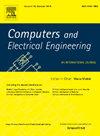Diverse multi-scale features absorption for lightweight object detection models in inclement weather conditions
IF 4.9
3区 计算机科学
Q1 COMPUTER SCIENCE, HARDWARE & ARCHITECTURE
引用次数: 0
Abstract
In recent years, numerous lightweight object detection models have been introduced and successfully deployed on low-computation devices. However, these models mainly focus on detecting objects in favorable weather conditions and do not adequately account for inclement conditions, particularly in the presence of fog. This significantly leads to the drastic performance degradation of object detectors, primarily attributable to the decreased visibility. To tackle the aforementioned deficiency, we introduce a novel diverse multi-scale feature absorption network (DMFA-Net) to guide lightweight detectors work efficiently in foggy weather conditions. Our approach achieves its objective through the close collaboration of three subnetworks: a detection enhancement subnetwork, a depth mining subnetwork, and a lightweight detection subnetwork. The lightweight detection subnetwork achieves a significant accuracy improvement by absorbing and learning a range of useful features from both the detection enhancement and depth mining subnetworks through diverse multi-scale feature absorption loss. Extensive experiments demonstrate that our DMFA-Net effectively boosts baseline lightweight detectors in accurately localizing and classifying objects, without adding any computational cost. Additionally, it outperforms representative competing approaches on both synthesized and real-world foggy image datasets.
多种多尺度特征吸收的轻型目标检测模型在恶劣天气条件下
近年来,许多轻量级的目标检测模型被引入并成功地部署在低计算设备上。然而,这些模型主要关注于在有利天气条件下探测物体,而没有充分考虑恶劣条件,特别是在有雾的情况下。这将导致目标检测器的性能急剧下降,主要是由于可见性降低。为了解决上述不足,我们引入了一种新的多尺度特征吸收网络(DMFA-Net)来指导轻型探测器在雾天条件下有效工作。我们的方法通过三个子网的密切合作来实现其目标:检测增强子网,深度挖掘子网和轻量级检测子网。轻量级检测子网通过不同的多尺度特征吸收损失,从检测增强和深度挖掘子网中吸收和学习一系列有用的特征,从而实现了显著的精度提高。大量的实验表明,我们的DMFA-Net在不增加任何计算成本的情况下,有效地提高了基线轻量级检测器在准确定位和分类对象方面的能力。此外,它在合成和真实世界雾图像数据集上都优于具有代表性的竞争方法。
本文章由计算机程序翻译,如有差异,请以英文原文为准。
求助全文
约1分钟内获得全文
求助全文
来源期刊

Computers & Electrical Engineering
工程技术-工程:电子与电气
CiteScore
9.20
自引率
7.00%
发文量
661
审稿时长
47 days
期刊介绍:
The impact of computers has nowhere been more revolutionary than in electrical engineering. The design, analysis, and operation of electrical and electronic systems are now dominated by computers, a transformation that has been motivated by the natural ease of interface between computers and electrical systems, and the promise of spectacular improvements in speed and efficiency.
Published since 1973, Computers & Electrical Engineering provides rapid publication of topical research into the integration of computer technology and computational techniques with electrical and electronic systems. The journal publishes papers featuring novel implementations of computers and computational techniques in areas like signal and image processing, high-performance computing, parallel processing, and communications. Special attention will be paid to papers describing innovative architectures, algorithms, and software tools.
 求助内容:
求助内容: 应助结果提醒方式:
应助结果提醒方式:


